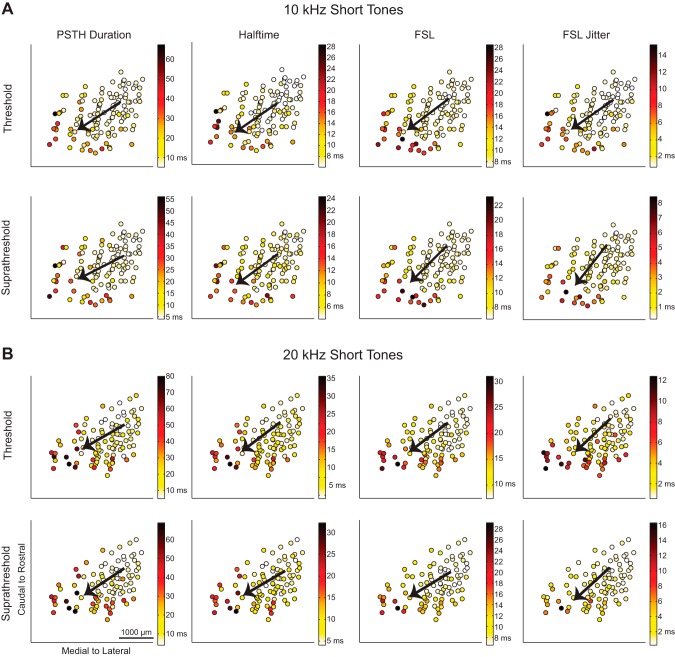Fig. 3.
Spiking responses to short tones vary from caudomedial to rostrolateral across the lamina. The maps of spiking in response to 10-kHz (A) and 20-kHz short tones (B) show response parameters recorded at each location. Multiple regression was performed to determine the steepest gradient axis (arrows). The spiking properties of PSTH duration, halftime, first spike latency (FSL), and FSL jitter were determined for each site at threshold and suprathreshold levels. See Table 1 for details on the regression statistics and Fig. 4 for spiking response maps for the long tone stimuli.

